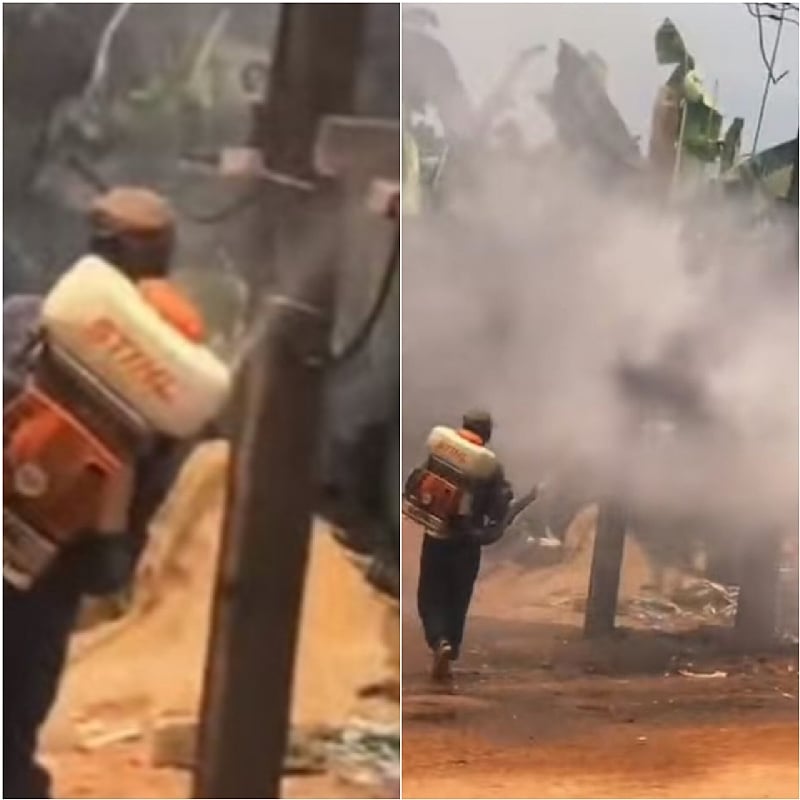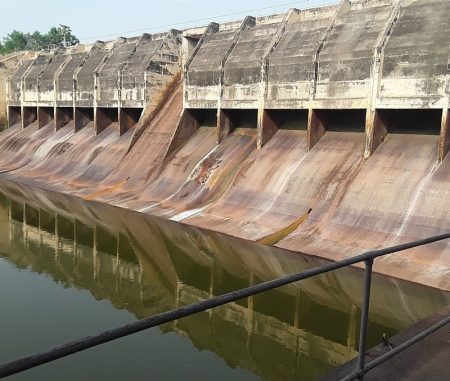This incident in Gwira Eshiem, where a young man bravely confronted a transformer fire with a simple sprayer, serves as a microcosm of larger issues surrounding fire safety and emergency response preparedness, not only in Ghana but also in many developing nations. The young man’s courageous act, while commendable, underscores a precarious reliance on individual heroism in the face of systemic inadequacies. His improvised firefighting method, using a sprayer likely intended for agricultural purposes, became the first and only line of defense against a potentially catastrophic event. This highlights the critical gap in immediate fire suppression capabilities within the community and raises concerns about the accessibility and readiness of professional firefighting services. While the young man’s actions undoubtedly mitigated the damage, it also exposed the vulnerability of the community to fire hazards and the potential for far greater devastation had the fire escalated beyond the capacity of his makeshift intervention.
The absence of fire service personnel at the time of the incident is a significant point of concern. While the reasons for their unavailability remain unspecified, it points to potential challenges within the fire service infrastructure, which may include resource limitations, logistical hurdles, or communication breakdowns. This unavailability forced a civilian, untrained in firefighting techniques and unequipped with proper safety gear, to confront a dangerous situation. Although his actions were born out of necessity and a desire to protect his community, they also placed him at considerable personal risk. This underscores the importance of ensuring prompt and reliable fire service responses, especially in densely populated areas or those with critical infrastructure like electrical transformers. A functioning and readily available fire service is not merely a desirable public service; it is a fundamental component of community safety and resilience.
The incident further exposes the broader deficiencies within Ghana’s firefighting capacity. The statistic revealing that over half of the country’s fire appliances are either faulty or out of service is a stark indicator of a system struggling to meet the demands of a growing nation. This statistic translates into delayed response times, reduced effectiveness in combating fires, and ultimately, greater risk to lives and property. It paints a picture of a system grappling with inadequate funding, maintenance backlogs, and potentially outdated equipment. The implications are far-reaching, impacting not only the immediate safety of communities but also hindering economic development and potentially deterring investment. A robust fire service is essential for ensuring public safety, protecting businesses, and fostering a sense of security that is conducive to growth and prosperity.
The young man’s actions, captured on video, serve as a powerful visual representation of the consequences of these systemic shortcomings. The footage, which likely spread rapidly through social media, provides a stark contrast between the urgency of the situation and the limited resources available to address it. It forces viewers to confront the reality of communities left vulnerable to fire hazards due to insufficient investment in fire safety infrastructure. The video’s virality also speaks to the public’s recognition of this critical issue and the growing demand for improved fire services. It transforms a local incident into a national conversation, highlighting the need for greater accountability and action from relevant authorities.
This incident should serve as a catalyst for comprehensive reform within Ghana’s fire service. Addressing the high percentage of faulty or out-of-service appliances requires a multi-pronged approach. This includes increased investment in acquiring new, modern equipment, implementing rigorous maintenance schedules for existing appliances, and establishing a reliable supply chain for spare parts. Beyond equipment, investing in personnel is equally crucial. Firefighters require specialized training to effectively handle diverse fire scenarios, operate complex equipment, and prioritize safety procedures. This training should encompass not only fire suppression techniques but also preventative measures, community education, and emergency medical response.
Ultimately, the Gwira Eshiem incident underscores the urgent need for a proactive and comprehensive approach to fire safety in Ghana. This encompasses not only equipping and training the fire service but also empowering communities with basic fire safety knowledge and resources. This could include public awareness campaigns on fire prevention, training in the use of fire extinguishers, and establishing community fire safety committees. By fostering a culture of fire safety awareness and investing in robust firefighting capabilities, Ghana can mitigate the risks posed by fire hazards and protect its citizens and infrastructure. The young man’s bravery should not be seen as a sustainable solution but rather as a wake-up call, prompting immediate and sustained action to ensure that communities are adequately prepared and protected against future fire emergencies.














